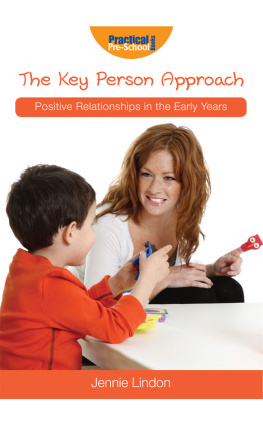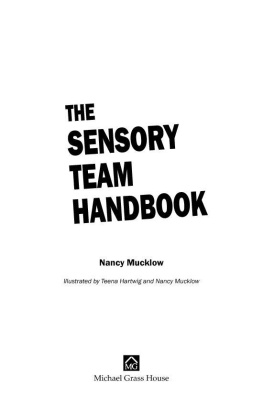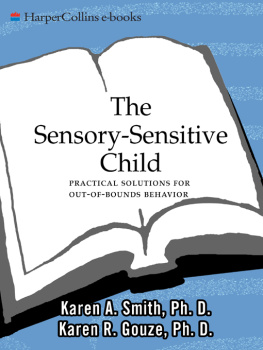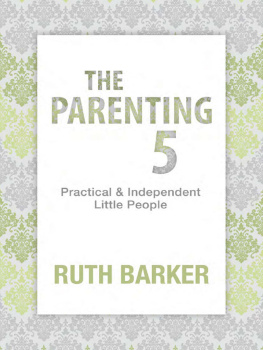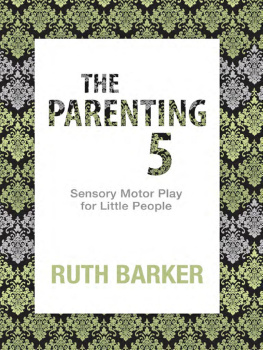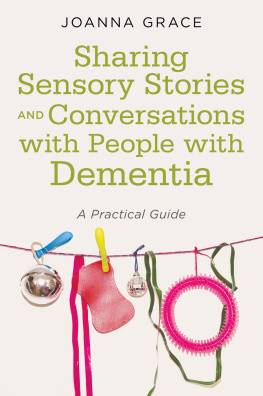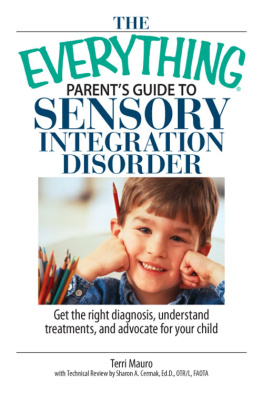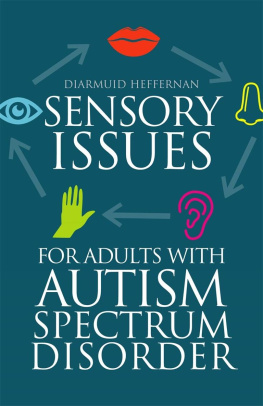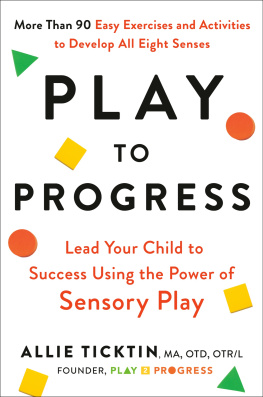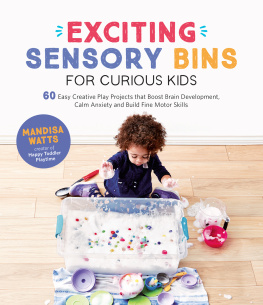Sue Gasgoyne - Sensory Play
Here you can read online Sue Gasgoyne - Sensory Play full text of the book (entire story) in english for free. Download pdf and epub, get meaning, cover and reviews about this ebook. year: 2012, publisher: Andrews UK, genre: Children. Description of the work, (preface) as well as reviews are available. Best literature library LitArk.com created for fans of good reading and offers a wide selection of genres:
Romance novel
Science fiction
Adventure
Detective
Science
History
Home and family
Prose
Art
Politics
Computer
Non-fiction
Religion
Business
Children
Humor
Choose a favorite category and find really read worthwhile books. Enjoy immersion in the world of imagination, feel the emotions of the characters or learn something new for yourself, make an fascinating discovery.
- Book:Sensory Play
- Author:
- Publisher:Andrews UK
- Genre:
- Year:2012
- Rating:4 / 5
- Favourites:Add to favourites
- Your mark:
- 80
- 1
- 2
- 3
- 4
- 5
Sensory Play: summary, description and annotation
We offer to read an annotation, description, summary or preface (depends on what the author of the book "Sensory Play" wrote himself). If you haven't found the necessary information about the book — write in the comments, we will try to find it.
Sensory Play draws upon current research findings and observations to present an informative and practical guide to maximising childrens sensory play opportunities. This guide enables practitioners to understand the values and benefits of sensory play, incorporating case studies and current research findings to make practical links to the EYFS. Sensory play is set within a wider context, highlighting links to child development theories. This title explains how sensory play can be a valuable tool in delivering curriculum outcomes in a wide variety of settings.
Sensory Play — read online for free the complete book (whole text) full work
Below is the text of the book, divided by pages. System saving the place of the last page read, allows you to conveniently read the book "Sensory Play" online for free, without having to search again every time where you left off. Put a bookmark, and you can go to the page where you finished reading at any time.
Font size:
Interval:
Bookmark:
Publisher Information
Published by Practical Pre-School Books , A Division of MA Education Ltd,
St Judes Church, Dulwich Road, Herne Hill, London, SE24 0PB
Tel 020 7738 5454 www.practicalpreschoolbooks.com
MA Education Ltd 2011
Front cover photos clockwise from left: iStockphoto.com/Don Barens, iStockphoto.com/Jeffrey Stroh,
MA Education Ltd 2011/Ben Suri, Sue Gascoyne 2011
Illustrated by Cathy Hughes
All rights reserved. No part of this publication may be reproduced, stored in a retrieval system, or transmitted by any means, electronic, mechanical, photocopied or otherwise, without the prior permission of the publisher.
Play in the EYFS: Sensory Play ISBN: 978-1-907241-23-9
For Freya and Zach, for teaching me all they know about sensory play.
Introducing sensory play
What is sensory play?
Imagine a walk in the woods; a visit to the seaside; a child mixing and splodging paint with a fat brush, or better still their fingers; or building with smooth wooden blocks. What do these all have in common? Each experience is inextricably linked to the senses. For example, the woodland walk conjures up crunching leaves underfoot while dappled light casts on tree trunks ripe for climbing. A trip to the seaside offers the satisfaction of shaping wet sand, creating channels for frothing water and the taste of salty air. Painting gives the pleasure and cold silky feel of paint or the visual explosion of colour as shades mix and loop. Block play offers the opportunity to create imaginary castles with cool wooden blocks satisfyingly clinking. The essence of the experience is both captured and conveyed through the colour and lights, sounds, feel, warmth, smells and taste.

 Activity
Activity
Try to imagine a vivid childhood play memory where one or more of your senses was really prominent. What do you think makes it so vivid? How does it make you feel?

Compare these experiences to the visual focus and passive nature of watching television or playing computer games just two of the trends in 21st century play cited in a recent research project (Sue Gascoyne, January 2010). Or visit the average toy shop, with shelf upon shelf of brightly coloured toys, some of which flash, bleep or talk, and the visual (and to a lesser extent auditory) focus of many toys is apparent. Opportunities for children to actually touch or taste are often discouraged, or limited to plastic. Play now primarily takes place indoors, where temperatures are constant,
and smells and environmental sounds masked.
All this contributes to play where sensory experience is limited. Contrast this with the vivid childhood play memories you may
have of running barefoot through grass, making mud pies, and rose petal perfume and the appeal of multi-sensory play is evident.

 Activity
Activity
For a reminder of the sensory limitations of plastic, close your eyes and place your hand in a bag of brightly coloured plastic toys. As the visual stimulus is removed, the appeal and differentness of these toys quickly disappears.

For something so fundamental to childrens growth and development, definitions of sensory play itself are remarkably elusive! Sensory play is essentially play that engages one or more of the senses. As such most play clearly has the potential to be sensory. Sensory play differs to other types of play in that the sensory focus adds a significant and integral extra dimension to the play. Usher (2010) defines sensory play as play that provides opportunities for children ... to use all their senses, or play that encourages the use of one particular sense. Sensory play is commonly accessed in the outdoor environment, and some forms, like sand and water play, can be intrinsically messy although this is something for us adults to embrace rather than dread! As the previous examples amply show, many sensory-rich play opportunities surround us in our everyday lives, without costing a penny. Most children are hardwired to know how to do sensory play and need no instructions when faced with sand, mud or water. Rather it is us adults who may have lost sight of the awe and wonder that such open-ended materials offer, the limitless possibilities and opportunities for quiet reflection, and the fact that some mess or even the momentary appearance of disorder (it is perfectly natural for children to combine objects and resources), is definitely worth the effort. The essential ingredients of quality play have been identified by some as space, time and materials. When it comes to sensory play this is all the more important as children need to be given the space, time, and permission to truly experience the sensory-rich qualities of materials.
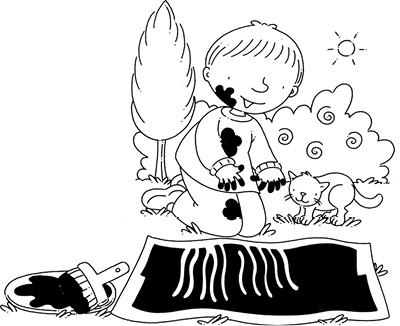
Our amazing senses
If asked about our senses most people would probably cite the five senses of sight, smell, sound, touch and taste. Although these external senses are vital, as we will discover in chapter two, the lesser-known but crucially important inner or sixth senses detect position, balance, movement, and more. Similarly, when we think of our senses, our eyes, ears and nose spring to mind, but really our whole body is a sensory organ as the skin around our sense organs, such as the inner ear, is packed with receptors to detect touch, pressure, heat, cold and pain. From birth, babies senses are tuned to detecting touch, space, their mothers smell, voice and repeated sounds. Hughes gives the example of a baby who had already grown accustomed to the theme tune of Coronation Street from exposure in the womb and on hearing it as a newborn, turned towards the sound and suddenly became alert and responsive (Anita Hughes, 2006, p.18).
Processing sensory information
Every sensory experience provides the foundations upon which all subsequent knowledge, thought and creativity are based. Each time a child (or indeed an adult) encounters a sensory stimulus a neuron (brain cell) connects to another neuron, establishing new connections in the brain. Signals flow along these complex neural networks, from one neuron to another, allowing the brain cells to communicate with each other by relaying information about emotions as well as everything we see, hear, taste, touch and smell. Each new sensory stimulus adds to the network, while repeated experiences increase the thickness and strength of the connections, helping signals to travel faster (Nancy Wartik & LaVonne Carlson-Finnerty, 1993). In this way each of us will develop a unique network of nerve connections created from our own unique sensory experiences, which means that the richer our sensory experiences the more intricate will be the patterns for learning, thought and creativity (Carla Hannaford, 1995, p.30).
Returning to that walk in the woods, when we hear the word woods all our experiences relating to woods come to mind (see diagram 1). Be it climbing trees, the feeling of achievement having balanced on a fallen log, feeling the texture of bark, scrunching leaves, looking up through the leaf canopy or walking through leaf litter. Memories of the rush of air on the face and scent of the forest while cycling through a wooded glade, the thrill of playing hide and seek or being chased, the exhilaration of swinging on a rope or warmth of dappled light. Smelling moss and rotting leaves, foraging for fungi, the satisfaction of peeling away rotten bark and revealing scurrying woodlice, intricate patterns made by the sun and leaves, the sound of bird song and so on. All these different sensory-rich experiences can potentially be accessed from the word woods. Broad-based knowledge depends upon a multitude of separate multi-sensory images and memories, developed and reshaped from a wealth of separate, yet interlinked, sensory experiences. Without the unique sensory experiences and memories that we attach to words, they would lack resonance and real meaning. Thus someone can only truly understand snow by actually feeling it themselves. No amount of stories and pictures will convey its essence or replace the magic of encountering snow first hand.
Font size:
Interval:
Bookmark:
Similar books «Sensory Play»
Look at similar books to Sensory Play. We have selected literature similar in name and meaning in the hope of providing readers with more options to find new, interesting, not yet read works.
Discussion, reviews of the book Sensory Play and just readers' own opinions. Leave your comments, write what you think about the work, its meaning or the main characters. Specify what exactly you liked and what you didn't like, and why you think so.

